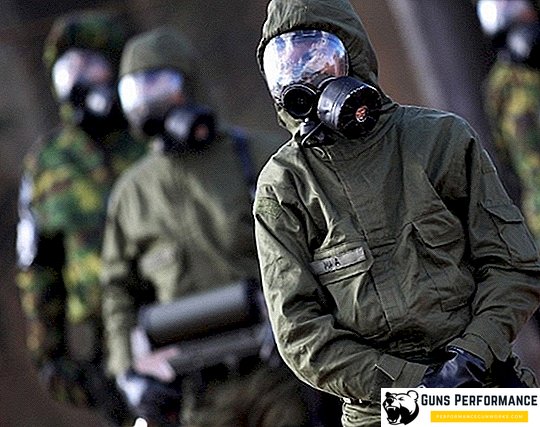Chemical weapons are among the most dangerous species, aimed at the destruction of a huge number of people. At its first stages of development, toxic substances were required to enter the respiratory tract. Nowadays, there are so powerful variations of it, that to hit a target, there is enough interaction with a small open area of skin or mucous membrane, which will be caused by the rapid destruction of a person. The use of these weapons, even in military conflicts, is completely prohibited. Although this does not mean that you do not need to create reliable means of chemical protection. One of the latest achievements in this area has become the newest fabric material, which has the ability to neutralize toxic components.

Brand new composition
When creating this protective material, specialized organometallic elements (metal-organic frameworks, MOF) were used, which include zirconium and some other substances that act as a catalyst and perform filtration. Through the use of this formula, it became possible to completely neutralize and decompose dangerous compounds that are part of chemical weapons. The organometallic formula of the powdery structure perfectly counteracts certain types of gas, using the principle of ordinary gas masks. Science has long since discovered these compounds, but it has never been possible to stabilize them before, the result of which was the loss of the necessary qualities.
The solution to this problem was the latest discovery by scientists from the University of North Carolina. They have created the latest technology for the production of MOF crystals on the surface of the material from polypropylene. The resulting sample was tested using DMNP (dimethyl 4-nitrophenyl phosphate), belonging to the class of nerve gases. For the complete elimination of toxic components took about 6 minutes. In the foreseeable future, this technology will help to create sets of protective overalls not only for military structures, but also for rescue services, which sometimes have to take part in the aftermath of man-made disasters.
Modern personal protective equipment
But all these technologies are only in the future. At the moment, the Russian army has the following means of protection:
- Filter masks. Special elements are used to help purify the air from dangerous elements. The most effective are those where the eyes and skin of the face are closed. This type is also designed for civilians in the event of a man-made disaster;
- Insulating masks. They are used for high levels of air pollution. Filter masks in this case does not help. There is a stock of such means of protection for the population, but they are much smaller;
- Respirators. Used for small soils;
- Bandages. Used in cases where there are no other means of protection;
- Masks. Ineffective tool used mainly by civilians.

If a situation arises in which there is a danger of infection, it is also necessary to use means that are designed to protect the skin. Through the skin can get poisonous elements of chemical weapons. Like gas masks, they are divided into filtering and insulating. The first type uses materials that completely cover the skin and prevent the ingress of air masses. This property will help if poison is sprayed in the air in a liquid or vapor state. When you create a cotton material is used, impregnated with a special substance.
As an example of an isolating means of protection one can cite a standard combined-arms set of clothes with which each person who has visited the ranks of the armed forces of the army of the Russian Federation met. When you create it uses a rather dense rubberized material. Thanks to this property of the kit, a full-fledged effect is created that isolates the environment.
Every year, an exhibition called "Chemistry" is held in Russia, at which Russian companies present the latest achievements of personal protective equipment. Constantly developing and opening new compounds that can be used to create ultra-modern protective materials. Even if all the chemical weapons in the world are completely eliminated, this trend will not lose its significance.












